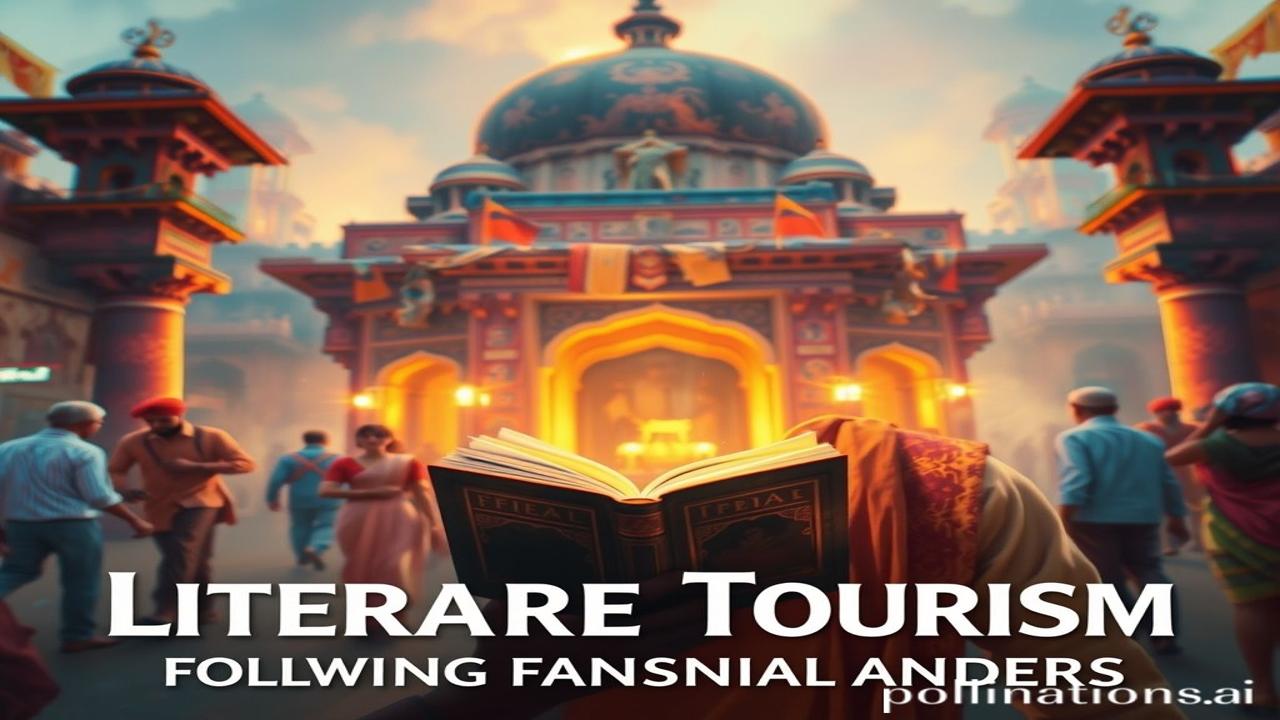Literary Tourism: Following Famous Indian Authors – Kitabon Ki Dhool Bhari Galiyon Mein Kho Jana
Kabhi socha hai, apne favourite lekhak ke shabdon ne jis shahar, jis gaon ko jeevant kiya, uss jagah ki mitti ko chhune mein kaisa lagega? Imagine walking in the footsteps of Premchand in Varanasi, or feeling the cool Himalayan breeze that inspired Ruskin Bond. Literary tourism, yaani saahityik paryatan, is exactly that – a journey that blends our love for literature with the thrill of exploration.
Literary Tourism Kya Hai?
Literary tourism is more than just visiting a place mentioned in a book. It’s about experiencing the mahaul that shaped a writer’s imagination. It’s about understanding the cultural context, the socio-political landscape, and the personal experiences that fueled their creativity. Think of it as peeking behind the curtain of a writer’s mind.
Bharat Mein Saahityik Paryatan Ka Itihaas
While the term ‘literary tourism’ might sound modern, the concept has been around for ages. People have always been drawn to places associated with great thinkers and artists. Even in ancient India, pilgrims travelled to Nalanda and Taxila, drawn by the intellectual aura of these renowned centers of learning.
But the organized form we know today started gaining momentum in the late 20th century, especially in the West, with pilgrimages to Shakespeare’s Stratford-upon-Avon or Jane Austen’s Bath. Now, India is catching up, recognizing the immense potential of its rich literary heritage.
Famous Indian Authors: A Trail of Inspiration
Bharat mein, you’re spoiled for choice when it comes to literary destinations. Here are a few trails you might want to explore:
- Varanasi, Uttar Pradesh: The Premchand Trail: Munshi Premchand, the ‘Upanyas Samrat’ (Emperor of Novels), lived and wrote extensively about the lives of ordinary people in Varanasi. Walking through the ghats, visiting the streets he described in his stories, you can almost hear the echoes of his characters. Hori aur Dhaniya, from Godan, seem to come alive in the narrow lanes.
- Mussoorie, Uttarakhand: Ruskin Bond’s Abode: Nestled in the foothills of the Himalayas, Mussoorie is synonymous with Ruskin Bond. His stories are interwoven with the mountains, the flora, and the fauna of this region. You can visit his favorite haunts, like Cambridge Book Depot (where he often meets fans) and feel the serenity that fuels his gentle prose.
- Kolkata, West Bengal: Rabindranath Tagore’s Legacy: Jorasanko Thakur Bari, the ancestral home of Rabindranath Tagore, is a must-visit. It’s a living museum that showcases his life, his art, and his profound influence on Bengali culture. Explore the rooms where he wrote his iconic poems and composed his unforgettable songs. You can almost feel the shaanti (peace) he sought.
- Shimla, Himachal Pradesh: Rudyard Kipling’s India: Though not Indian, Rudyard Kipling spent a significant part of his life in India and drew heavily from its landscapes and cultures in his works. Shimla, the summer capital during the British Raj, features prominently in many of his stories. Explore the old colonial buildings and imagine Kipling observing the bustling streets, penning down his tales of Mowgli and Rikki-Tikki-Tavi.
ज़मीनी सच – Ek Din Varanasi Mein
Imagine, you wake up in a guesthouse overlooking the Ganges. The air is filled with the scent of incense and the sound of temple bells. You start your day with a chai at a local stall, listening to snippets of conversations around you – much like Premchand might have done a century ago.
Later, you walk through the galiyan (lanes) of Varanasi, the same galiyan where Hori, the protagonist of Godan, toiled and dreamed. You see the same poverty, the same resilience, the same vibrancy that Premchand captured in his writing. You visit a local school, perhaps one similar to where Premchand taught, and hear the laughter of children echoing through the courtyard. The dust, the heat, the chaos – it all feels strangely familiar, like stepping into the pages of a beloved novel.
धरोहर और पहचान: Literary Tourism and Bharatiyata
Literary tourism helps us connect with our dharohar (heritage) in a profound way. It allows us to understand the nuances of our culture, the complexities of our history, and the richness of our literary traditions. By visiting places associated with our literary giants, we celebrate Bharatiyata and reinforce our connection to our roots. It gives new generation a chance to explore stories which they know but never had a chance to see it in real life
मजेदार तथ्य या भ्रम-भंजक
Myth: Literary tourism is only for scholars and serious readers.
Fact: While scholars certainly enjoy it, literary tourism is for anyone who loves a good story and has a sense of adventure. You don’t need to be an expert in literature to appreciate the beauty of a place that inspired a great writer.
दृश्य और भावनाएं: A Sensory Journey
The air in Mussoorie is crisp and clean, scented with pine and deodar. The temple walls of Jorasanko Thakur Bari are cool to the touch, whispering tales of a bygone era. The sounds of Varanasi – the chanting of mantras, the ringing of bells, the chatter of vendors – create a symphony that’s both chaotic and captivating.
Close your eyes and imagine the sights, sounds, smells, and textures of these places. Let your senses transport you to the world of your favorite Indian authors.
अंतिम विचार या उद्धरण
“शब्द वो पुल हैं, जो हमें अतीत से जोड़ते हैं।”
These words are bridges that connect us to the past. Let’s walk across them, explore the landscapes that inspired our literary heroes, and rediscover the magic of storytelling.
